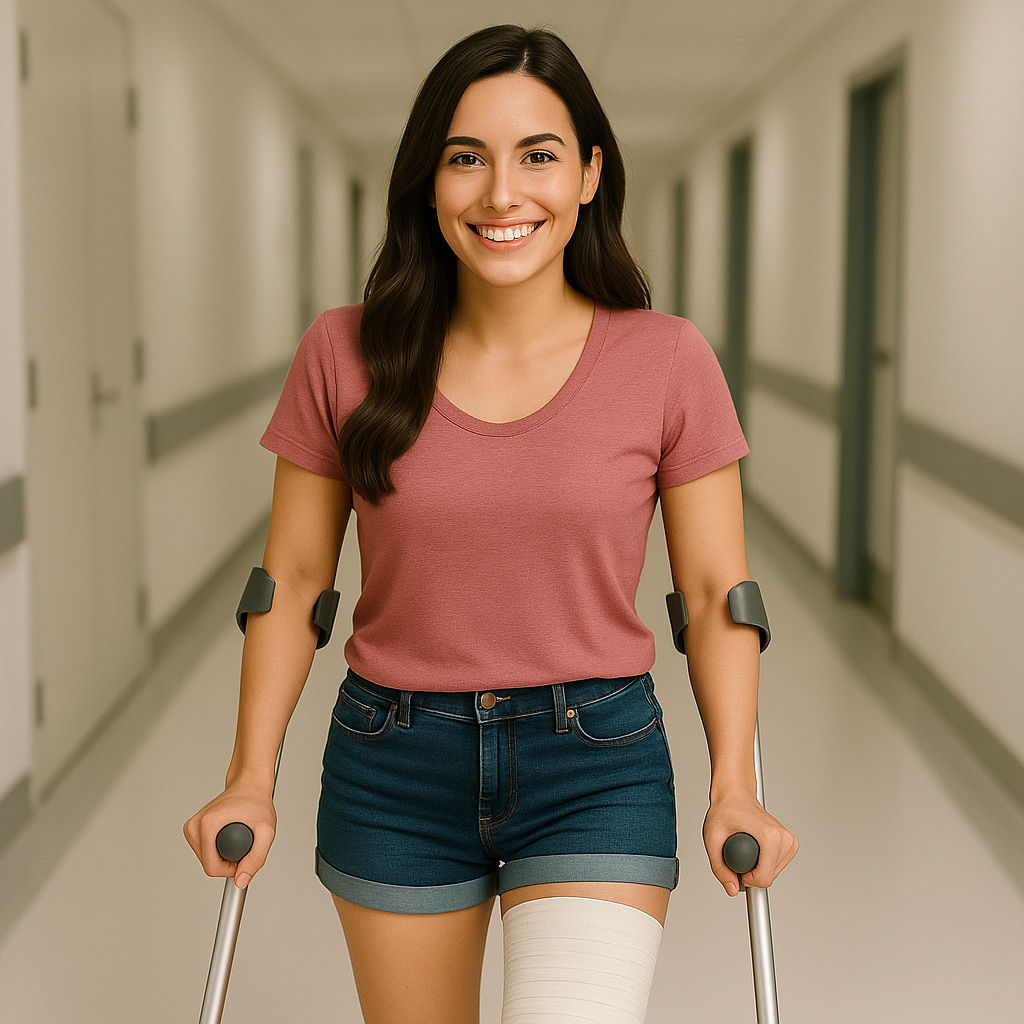See Also:
Rehabilitation Goals
- Protect the repaired meniscus while it heals
- Restore range of motion (ROM)
- Rebuild muscle strength and control
- Return to daily activities, work, and sport safely
- Prevent stiffness and future injury
Expected Recovery Time
| Milestone | Timeframe |
|---|---|
| Weight bearing with crutches | 0–6 weeks |
| Discontinuation of crutches | 4–6 weeks |
| Full range of motion | 6–10 weeks |
| Return to low-impact activities | 3–4 months |
| Return to high-impact sports | 5–6 months |
Phase 1: Early Post-op (0–2 weeks)
Goals
- Protect the repair site
- Control pain and swelling
- Begin gentle ROM exercises within allowed limits
- Prevent muscle atrophy
Instructions
- Use crutches for walking as instructed (usually non-weight bearing or partial weight bearing)
- Keep the leg elevated and apply ice packs for 15–20 minutes every 2–3 hours
- Keep incisions dry; follow wound care instructions
- Wear any prescribed knee brace locked in extension unless instructed otherwise
Exercises
- Ankle pumps
- Quadriceps sets (isometric)
- Straight leg raises (only if able without pain or knee lag)
- Passive knee flexion to surgeon-prescribed limit (often 0–90°)
Phase 2: Controlled Motion (2–6 weeks)
Goals
- Gradually increase ROM (as prescribed)
- Begin weight bearing as tolerated (if allowed)
- Improve muscle control and reduce limping
Instructions
- Continue using brace and crutches as advised
- Avoid twisting, pivoting, or deep knee bending
- Continue icing after exercise or if swelling increases
Exercises
- Heel slides (within allowed ROM)
- Patellar mobilizations
- Standing weight shifts
- Stationary cycling (without resistance once cleared)
- Straight leg raises in all planes
Phase 3: Strengthening Phase (6–12 weeks)
Goals
- Restore full ROM
- Improve quadriceps and hamstring strength
- Normalize gait
Instructions
- Wean off crutches and brace as directed
- Continue to avoid high-impact or pivoting activities
Exercises
- Mini squats (0–45° initially)
- Step-ups and step-downs
- Leg press (light resistance, limited ROM)
- Resistance band exercises (hip and knee)
- Core and balance work (single-leg stands, wobble board)
Phase 4: Advanced Strengthening & Functional Training (3–5 months)
Goals
- Restore dynamic knee control
- Build endurance and coordination
- Prepare for sport-specific activities
Instructions
- Gradually reintroduce functional movements
- Increase exercise intensity and complexity
Exercises
- Lunges and deeper squats (as tolerated)
- Plyometric drills (e.g. hopping, bounding)
- Agility drills (side steps, ladder drills)
- Sport-specific drills (non-contact)
Phase 5: Return to Sport (5–6+ months)
Goals
- Achieve full strength and neuromuscular control
- Return safely to full sports participation
- Ensure confidence in knee function
Instructions
- Continue sport-specific training
- Undergo clearance assessment by your surgeon or physiotherapist before return to play
Exercises
- Full agility and sprint drills
- Cutting and pivoting activities
- Jump training and landing mechanics
- Continue general strength and conditioning
When to Contact Your Surgeon
- Persistent or increasing pain not relieved by rest or medication
- Signs of infection (e.g. redness, warmth, discharge, or fever over 38°C)
- Excessive swelling that does not decrease with elevation and ice
- Inability to bear weight when expected to be able to
- New clicking, locking, or giving way of the knee
Disclaimer:
This is a general guideline. Your physiotherapist or Dr Lambers may adjust the protocol based on your specific condition and progress.
